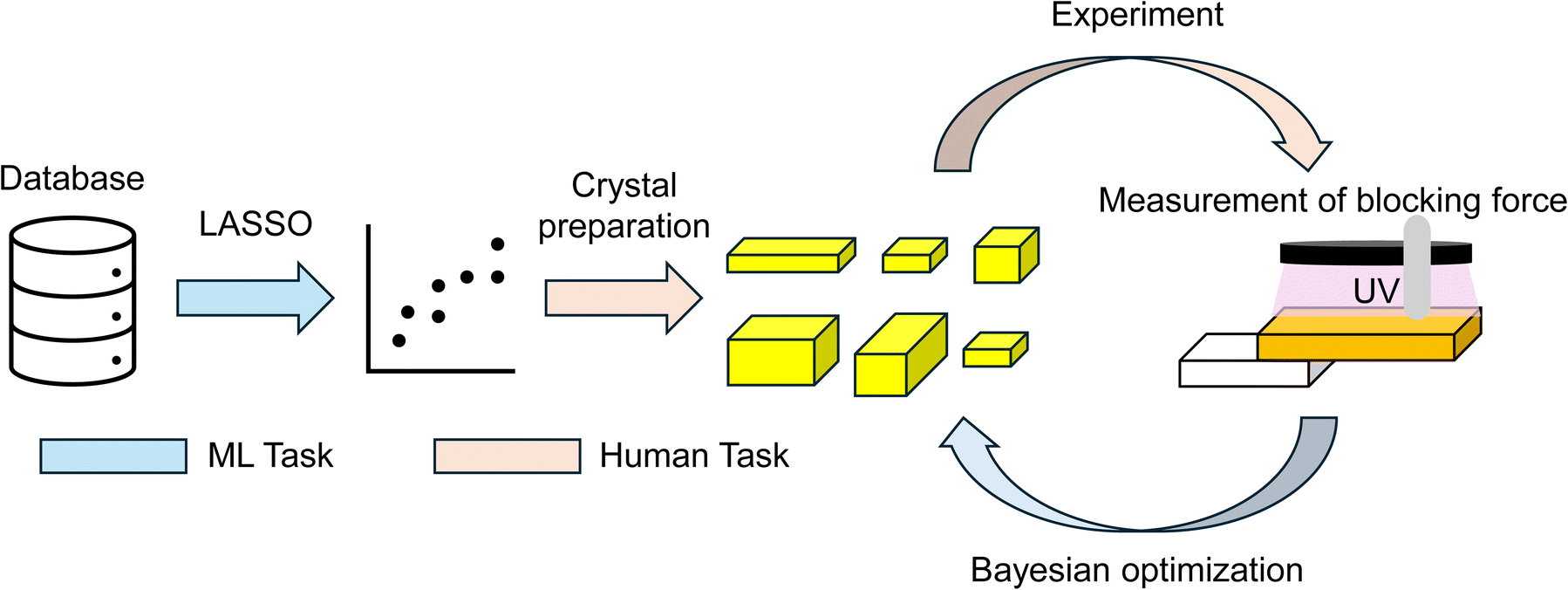Waseda University scientists harness AI to supercharge light-powered crystals, paving the way for smarter, greener robotics and medical devices with unmatched strength and efficiency.
 Research: Machine learning-driven optimization of the output force in photo-actuated organic crystals. Image Credit: vectorfusionart / Shutterstock
Research: Machine learning-driven optimization of the output force in photo-actuated organic crystals. Image Credit: vectorfusionart / Shutterstock
Materials that convert external stimuli into mechanical motion, known as actuators, play a crucial role in robotics, medical devices, and other advanced applications. Among them, photomechanical crystals deform in response to light, making them promising for lightweight and remotely controllable actuation. Their performance depends on factors such as molecular structures, crystal properties, and experimental conditions.
A key performance indicator of these materials is the blocking force — the maximum force exerted when deformation is completely restricted. However, achieving high blocking forces remains challenging due to the complex interplay of crystal characteristics and testing conditions. Understanding and optimizing these factors is essential for expanding the potential applications of photomechanical crystals.
Machine Learning for Enhanced Performance
In a step toward optimizing the output force of photo-actuated organic crystals, researchers from Waseda University have leveraged machine learning techniques to enhance their performance. The study was led by Associate Professor Takuya Taniguchi from the Center for Data Science, along with Mr. Kazuki Ishizaki and Professor Toru Asahi from the Department of Advanced Science and Engineering at Waseda University. Their findings were published in the journal Digital Discovery on 20 March 2025.
"We noticed that machine learning simplifies the search for optimal molecules and experimental parameters," said Dr. Taniguchi. "This inspired us to integrate data science techniques with synthetic chemistry, enabling us to rapidly identify new molecular designs and experimental approaches for achieving high-performance results."
The team utilized two machine learning techniques: LASSO (least absolute shrinkage and selection operator) regression for molecular design, and Bayesian optimization for selecting experimental conditions. This led to a material pool of salicylideneamine derivatives, from which real-world force measurements were efficiently sampled. As a result, they achieved up to 3.7 times greater blocking force compared to previous values, with a process at least 73 times more efficient than conventional trial-and-error methods.
"Our research marks a significant breakthrough in photo-actuated organic crystals by systematically applying machine learning," Dr. Taniguchi said. "By optimizing both molecular structures and experimental conditions, we have demonstrated the potential to dramatically enhance the performance of light-responsive materials."
 Workflow of this research. Machine learning (ML) was used to find the relationship between Young's modulus and functional groups and to find the optimal experimental condition. The human task involves the preparation of crystal samples and experimental assays to test the suggested conditions in the real world.
Workflow of this research. Machine learning (ML) was used to find the relationship between Young's modulus and functional groups and to find the optimal experimental condition. The human task involves the preparation of crystal samples and experimental assays to test the suggested conditions in the real world.
Applications and Future Potential
The proposed technology has broad implications for remote-controlled actuators, small-scale robotics, medical devices, and energy-efficient systems. Because photo-actuated crystals respond to light, they enable contactless and remote operation, making them ideal for robotic components in confined or sensitive environments. Their ability to generate force noninvasively with focused light may also benefit microsurgical tools and drug delivery mechanisms.
By leveraging a clean energy input — light irradiation — while maximizing mechanical output, these materials hold promise for eco-friendly manufacturing processes and devices aimed at reducing overall energy consumption.
"Beyond improving force output, our approach paves the way for more sophisticated, miniaturized devices, from wearable technology to aerospace engineering and remote environmental monitoring," Dr. Taniguchi added.
Conclusion
This study highlights the power of a machine learning–driven strategy in accelerating the development of high-performance photo-actuated materials, bringing them one step closer to real-world applications and commercial viability.
Source:
Journal reference: